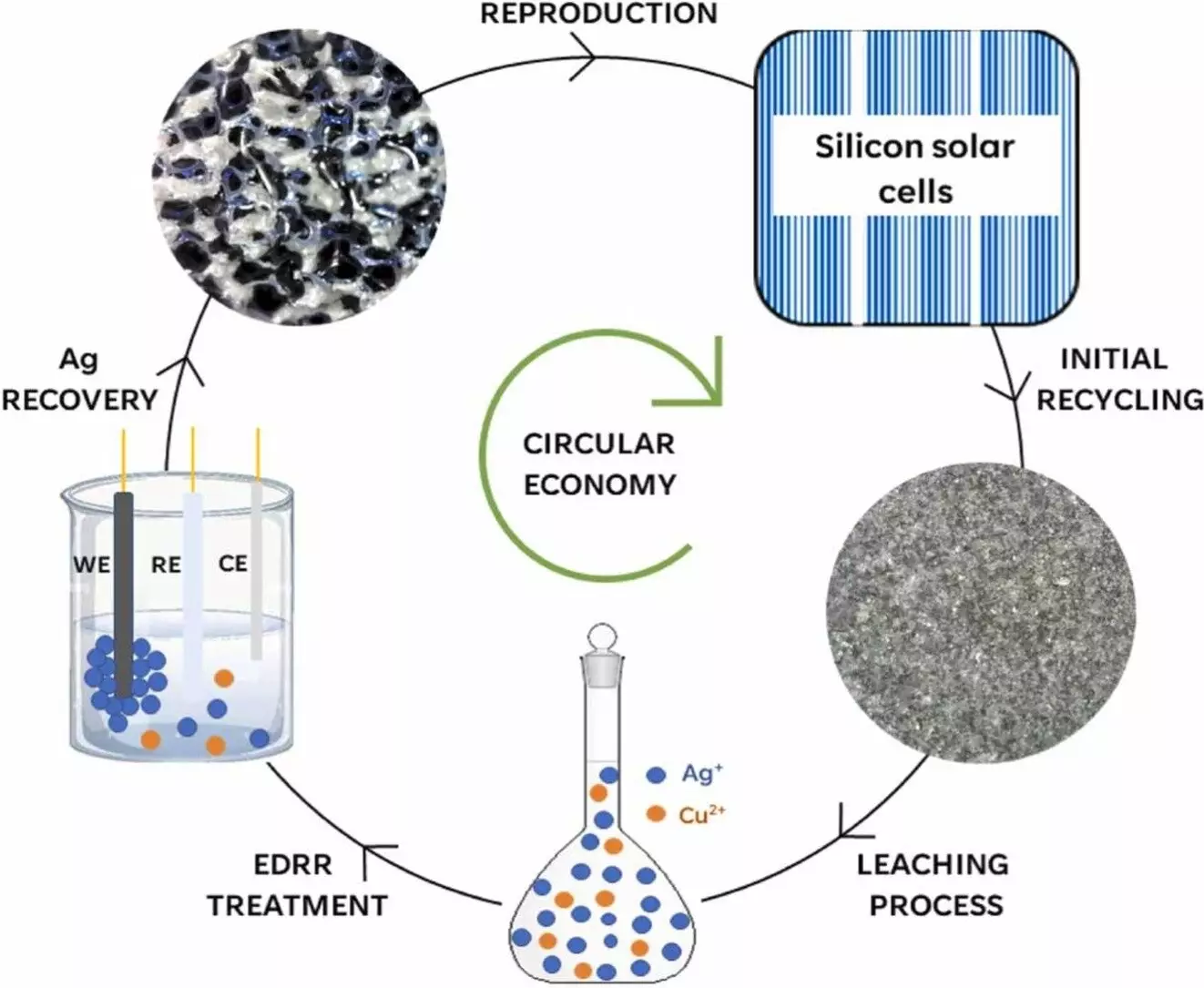With the ongoing climate change crisis, the push for renewable energy sources like solar power has become increasingly important. However, the disposal of dead solar panels has emerged as a significant environmental concern. Traditional recycling methods have found it challenging to recover valuable materials from these panels, such as silver used in electrical circuits.
A team of researchers in Italy has recently made a breakthrough in the efficient retrieval of silver from decommissioned solar panels. By using a base-activated persulfate along with ammonia, they were able to develop a cost-effective and environmentally friendly process. Through a series of experiments and optimizations, the team identified the ideal conditions for recovering up to 98.7% of the silver content from the panels.
The innovative process involves using persulfate as an oxidizing agent to separate the silver from the electrical circuits while creating a protective layer of copper oxide to prevent leaching. By carefully adjusting the concentrations of ammonia and potassium persulfate, along with the reaction time, the researchers were able to achieve an impressive 98.7% recovery rate. This marks a significant advancement in the recycling of solar panel materials.
The successful retrieval of silver from dead solar panels not only addresses the environmental challenges associated with their disposal but also opens up new opportunities for sustainable resource management. By implementing this efficient process on a larger scale, it is possible to recover valuable materials and reduce the environmental impact of solar panel waste.
The development of a highly efficient method for retrieving silver from decommissioned solar panels represents a significant step forward in the field of renewable energy technology. The research conducted by the team in Italy showcases the potential for innovative solutions to environmental problems and highlights the importance of sustainable practices in the transition to a cleaner energy future.



Leave a Reply